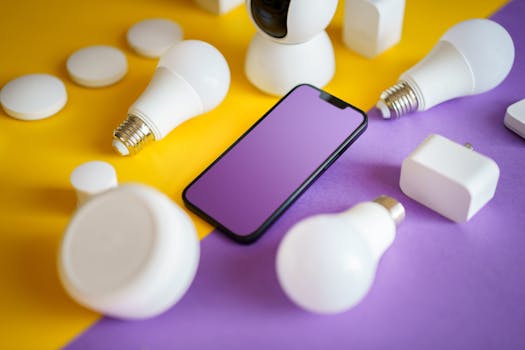
Smart Homes 2025: The Rise of AI-Driven Devices
Smart Homes 2025: The Rise of AI-Driven Devices is revolutionizing the way we live and interact with our homes. With the integration of Artificial Intelligence (AI) and Internet of Things (IoT) technology, smart homes are becoming more efficient, secure, and convenient. In this article, we will explore the latest trends and innovations in smart home technology, focusing on AI-driven devices and their impact on home automation, security, and energy efficiency.
Introduction to Smart Homes
A smart home is a residence that uses advanced technology to automate and control various aspects of the living space. This includes lighting, temperature, security, entertainment, and even household appliances. Smart homes use a network of sensors, cameras, and other devices to collect data and make decisions based on the homeowner’s preferences and habits.
AI-Driven Devices in Smart Homes
AI-driven devices are becoming increasingly popular in smart homes, as they offer advanced automation and control capabilities. These devices use machine learning algorithms to learn the homeowner’s behavior and preferences, allowing them to make adjustments and improvements over time. Some examples of AI-driven devices in smart homes include:
- Virtual assistants, such as Amazon Alexa and Google Assistant, which can control lighting, temperature, and entertainment systems with voice commands.
- Smart thermostats, which can learn the homeowner’s schedule and preferences to optimize heating and cooling.
- Security cameras, which can detect motion and send alerts to the homeowner’s smartphone or tablet.
- Smart door locks, which can be controlled remotely and grant access to authorized individuals.
Benefits of AI-Driven Devices in Smart Homes
The integration of AI-driven devices in smart homes offers numerous benefits, including:
- Enhanced convenience: AI-driven devices can automate routine tasks, such as turning on lights and adjusting the temperature, making it easier to manage the home.
- Improved security: AI-driven security cameras and door locks can detect and prevent potential threats, providing an added layer of protection for the home and its occupants.
- Increased energy efficiency: AI-driven devices can optimize energy consumption by learning the homeowner’s schedule and preferences, reducing waste and saving money on utility bills.
- Personalization: AI-driven devices can learn the homeowner’s preferences and adapt to their habits, providing a more personalized and comfortable living experience.
Challenges and Limitations of AI-Driven Devices in Smart Homes
While AI-driven devices offer many benefits, there are also some challenges and limitations to consider:
- Privacy concerns: The use of AI-driven devices in smart homes raises concerns about data privacy and security, as these devices can collect and store sensitive information about the homeowner and their habits.
- Compatibility issues: AI-driven devices may not be compatible with all smart home systems, which can create integration challenges and limit the functionality of the devices.
- Cost: AI-driven devices can be expensive, especially when compared to traditional smart home devices, which can make them inaccessible to some homeowners.
- Dependence on technology: The reliance on AI-driven devices can create a dependence on technology, which can be problematic if the devices fail or are compromised.
Conclusion
In conclusion, Smart Homes 2025: The Rise of AI-Driven Devices is a rapidly evolving field that is transforming the way we live and interact with our homes. While there are challenges and limitations to consider, the benefits of AI-driven devices in smart homes, including enhanced convenience, improved security, increased energy efficiency, and personalization, make them an attractive option for homeowners. As the technology continues to advance and improve, we can expect to see even more innovative and sophisticated AI-driven devices in smart homes, further enhancing the living experience and making our homes more comfortable, secure, and sustainable.






